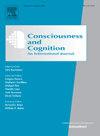Task set reconfiguration following masked and unmasked task cues
IF 2
3区 心理学
Q2 PSYCHOLOGY, EXPERIMENTAL
引用次数: 0
Abstract
Numerous previous studies have shown that masked stimuli trigger cognitive control processes, including the activation of task sets, and thereby affect subsequent processing. However, it has not been directly tested whether unconsciously activated task sets also need to be reconfigured when switching to a new task, as has been shown for consciously triggered task sets. To test whether unconsciously activated task sets are subject to inhibitory processes, we measured n-2 repetition costs following masked cue presentation in a task switching design. We furthermore simultaneously assessed event-related potentials (ERPs) to gain additional insights into task set reconfiguration processes. Results showed that task sets were inhibited following the presentation of an unmasked task cue, as reflected by n-2 repetition costs. Furthermore, a cue-locked positivity ERP component indicated that task sets were reconfigured following both mere task preparation and task execution. In contrast, no evidence for a reconfiguration of unconsciously activated task sets was observed following masked cue presentation in either measure. Thus, task set reconfiguration, including the inhibition of a task set, is likely tied to conscious task set activation, suggesting that an unconscious process – once initiated – is not terminated by inhibitory processes.
根据屏蔽和未屏蔽任务提示重新配置任务集
许多先前的研究表明,隐藏刺激触发认知控制过程,包括任务集的激活,从而影响后续处理。然而,还没有直接测试无意识激活的任务集在切换到新任务时是否也需要重新配置,正如有意识触发的任务集所显示的那样。为了测试无意识激活的任务集是否受到抑制过程的影响,我们在任务切换设计中测量了隐藏线索呈现后的n-2重复成本。我们进一步同时评估了事件相关电位(erp),以进一步了解任务集重构过程。结果表明,任务集在出现一个未被掩盖的任务线索后被抑制,这反映在n-2重复成本上。此外,线索锁定的正性ERP成分表明,任务集在单纯的任务准备和任务执行后都被重新配置。相比之下,在两种测量中都没有观察到无意识激活的任务集在隐藏线索呈现后重新配置的证据。因此,任务集的重新配置,包括任务集的抑制,很可能与有意识的任务集激活有关,这表明一个无意识过程——一旦启动——不会被抑制过程终止。
本文章由计算机程序翻译,如有差异,请以英文原文为准。
求助全文
约1分钟内获得全文
求助全文
来源期刊

Consciousness and Cognition
PSYCHOLOGY, EXPERIMENTAL-
CiteScore
4.30
自引率
8.30%
发文量
123
期刊介绍:
Consciousness and Cognition: An International Journal provides a forum for a natural-science approach to the issues of consciousness, voluntary control, and self. The journal features empirical research (in the form of regular articles and short reports) and theoretical articles. Integrative theoretical and critical literature reviews, and tutorial reviews are also published. The journal aims to be both scientifically rigorous and open to novel contributions.
 求助内容:
求助内容: 应助结果提醒方式:
应助结果提醒方式:


